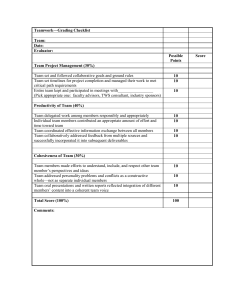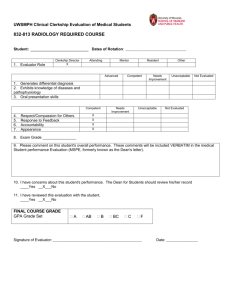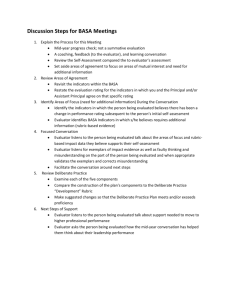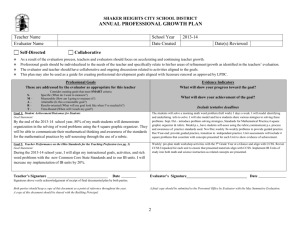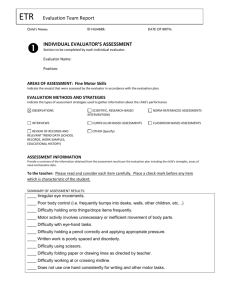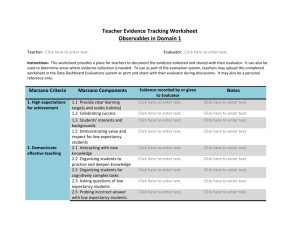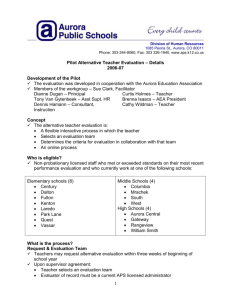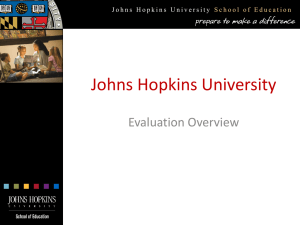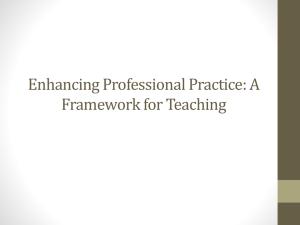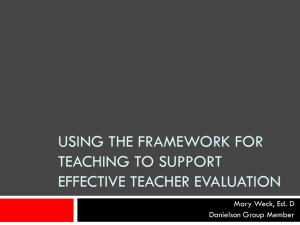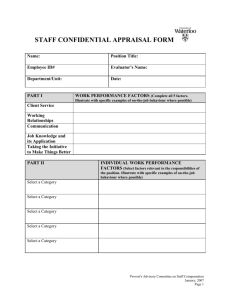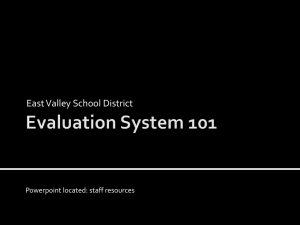contributions analysis
advertisement
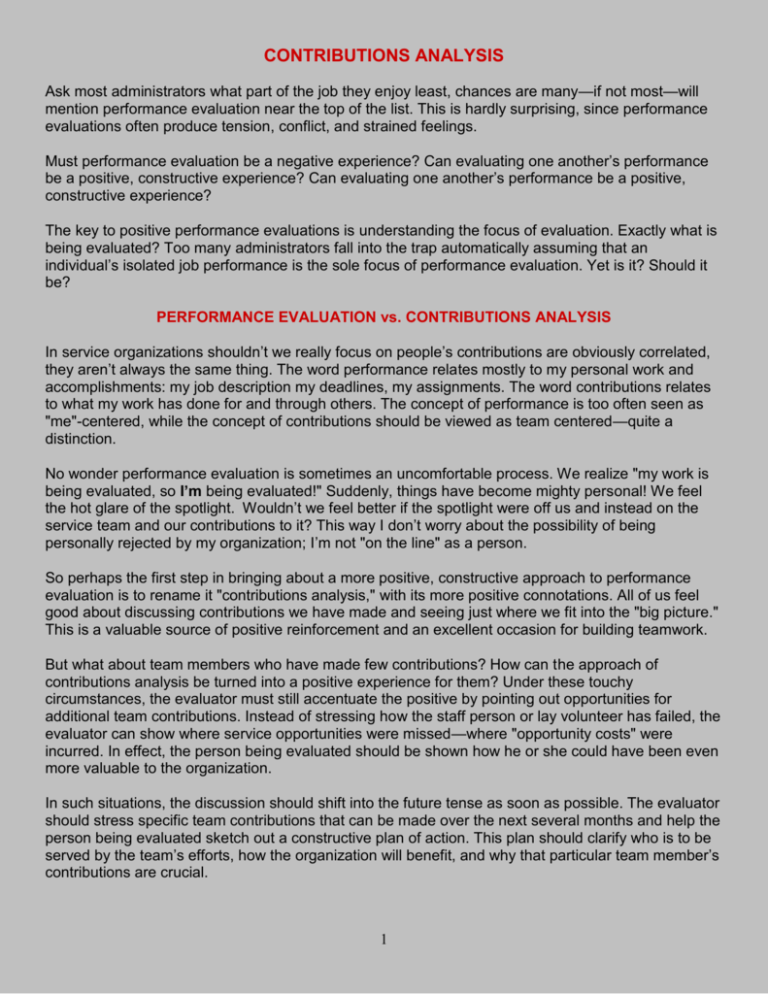
CONTRIBUTIONS ANALYSIS Ask most administrators what part of the job they enjoy least, chances are many—if not most—will mention performance evaluation near the top of the list. This is hardly surprising, since performance evaluations often produce tension, conflict, and strained feelings. Must performance evaluation be a negative experience? Can evaluating one another’s performance be a positive, constructive experience? Can evaluating one another’s performance be a positive, constructive experience? The key to positive performance evaluations is understanding the focus of evaluation. Exactly what is being evaluated? Too many administrators fall into the trap automatically assuming that an individual’s isolated job performance is the sole focus of performance evaluation. Yet is it? Should it be? PERFORMANCE EVALUATION vs. CONTRIBUTIONS ANALYSIS In service organizations shouldn’t we really focus on people’s contributions are obviously correlated, they aren’t always the same thing. The word performance relates mostly to my personal work and accomplishments: my job description my deadlines, my assignments. The word contributions relates to what my work has done for and through others. The concept of performance is too often seen as "me"-centered, while the concept of contributions should be viewed as team centered—quite a distinction. No wonder performance evaluation is sometimes an uncomfortable process. We realize "my work is being evaluated, so I’m being evaluated!" Suddenly, things have become mighty personal! We feel the hot glare of the spotlight. Wouldn’t we feel better if the spotlight were off us and instead on the service team and our contributions to it? This way I don’t worry about the possibility of being personally rejected by my organization; I’m not "on the line" as a person. So perhaps the first step in bringing about a more positive, constructive approach to performance evaluation is to rename it "contributions analysis," with its more positive connotations. All of us feel good about discussing contributions we have made and seeing just where we fit into the "big picture." This is a valuable source of positive reinforcement and an excellent occasion for building teamwork. But what about team members who have made few contributions? How can the approach of contributions analysis be turned into a positive experience for them? Under these touchy circumstances, the evaluator must still accentuate the positive by pointing out opportunities for additional team contributions. Instead of stressing how the staff person or lay volunteer has failed, the evaluator can show where service opportunities were missed—where "opportunity costs" were incurred. In effect, the person being evaluated should be shown how he or she could have been even more valuable to the organization. In such situations, the discussion should shift into the future tense as soon as possible. The evaluator should stress specific team contributions that can be made over the next several months and help the person being evaluated sketch out a constructive plan of action. This plan should clarify who is to be served by the team’s efforts, how the organization will benefit, and why that particular team member’s contributions are crucial. 1 Instead of focusing on the routine duties to be performed by the team member, contributions analysis highlights how others benefit and are served by team efforts. Each member of the team should be encouraged and challenged to fill a niche on the team, thereby making vital contributions to the overall mission. These distinctive contributions can then serve as the target for job descriptions and performance evaluation. A CHECKLIST FOR CONTRIBUTIONS ANALYSIS The contributions analysis process should above all affirm team members on both a professional and personal level. One of the best ways to do this is to spend more time asking than telling. When we give the person being evaluated the opportunity to critique their own performance and offer suggestions for contributions enhancement, we allow them to "save face" and "own" their job. This creates a fertile climate for non-defensive, honest communication. Very often the evaluator’s primary role in contributions analysis is to "prime the pump" and get the team member to open up. Here are some sample questions that can help the evaluator turn the contributions analysis process into an interactive dialogue: Who benefits by the way you perform your job? What is your team’s mission? What unique niche do you occupy on the team? How are your contributions probably perceived by the other members of your team? How can team members help you further increase your contributions? In what ways can you help boost the contribution of other team members? Are there changes you can think of that would make your contributions more valuable to the team? What would you most like to personally accomplish over the next year? What you like to see your team accomplish? How does your job fit into the big picture of the organization? What contributions do you feel best about making? How would the team suffer or lose out if you didn’t perform? Ultimately, the performance evaluation-contributions analysis process should help team members feel, "I’m appreciated," "I’m valuable," "I’m productive," and "I’m unique." The resulting discussion should provide each member of the team with a well-marked pathway to becoming even more appreciated, valuable, productive and unique. This is admittedly an idealized approach to performance evaluation, but service organizations must always strive for the ideal. The job of service providers is to bring out the best in others and their organizations. Contributions analysis can play a key role in this quest. 2
